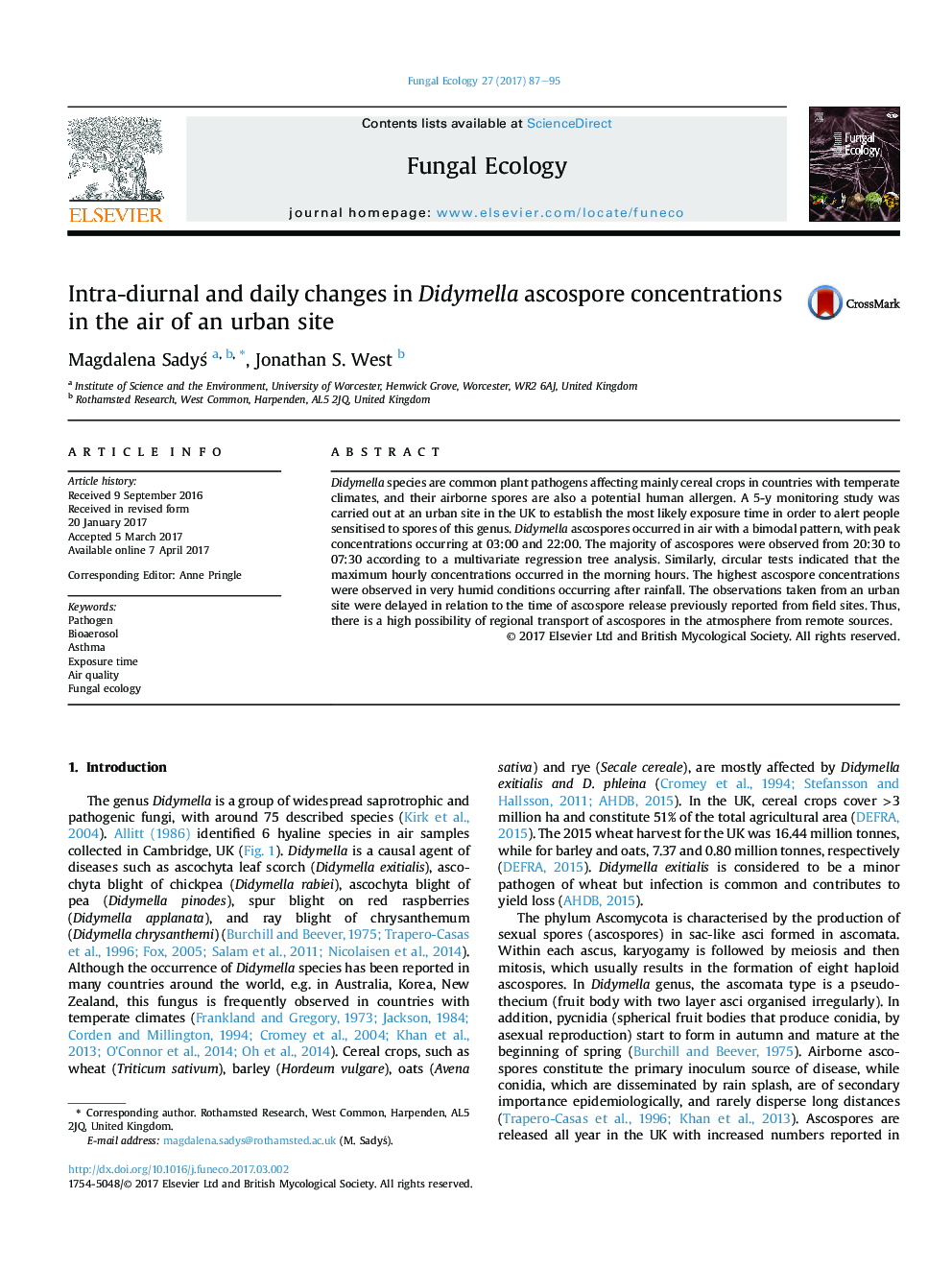| کد مقاله | کد نشریه | سال انتشار | مقاله انگلیسی | نسخه تمام متن |
|---|---|---|---|---|
| 5517692 | 1401021 | 2017 | 9 صفحه PDF | دانلود رایگان |

- Exposure time to allergenic Didymella ascospores.
- Impact of weather on the hourly changes in concentration in the air.
- Comprehensive statistical evaluation of 5-year data collected in residential area.
Didymella species are common plant pathogens affecting mainly cereal crops in countries with temperate climates, and their airborne spores are also a potential human allergen. A 5-y monitoring study was carried out at an urban site in the UK to establish the most likely exposure time in order to alert people sensitised to spores of this genus. Didymella ascospores occurred in air with a bimodal pattern, with peak concentrations occurring at 03:00 and 22:00. The majority of ascospores were observed from 20:30 to 07:30 according to a multivariate regression tree analysis. Similarly, circular tests indicated that the maximum hourly concentrations occurred in the morning hours. The highest ascospore concentrations were observed in very humid conditions occurring after rainfall. The observations taken from an urban site were delayed in relation to the time of ascospore release previously reported from field sites. Thus, there is a high possibility of regional transport of ascospores in the atmosphere from remote sources.
Journal: Fungal Ecology - Volume 27, Part A, June 2017, Pages 87-95